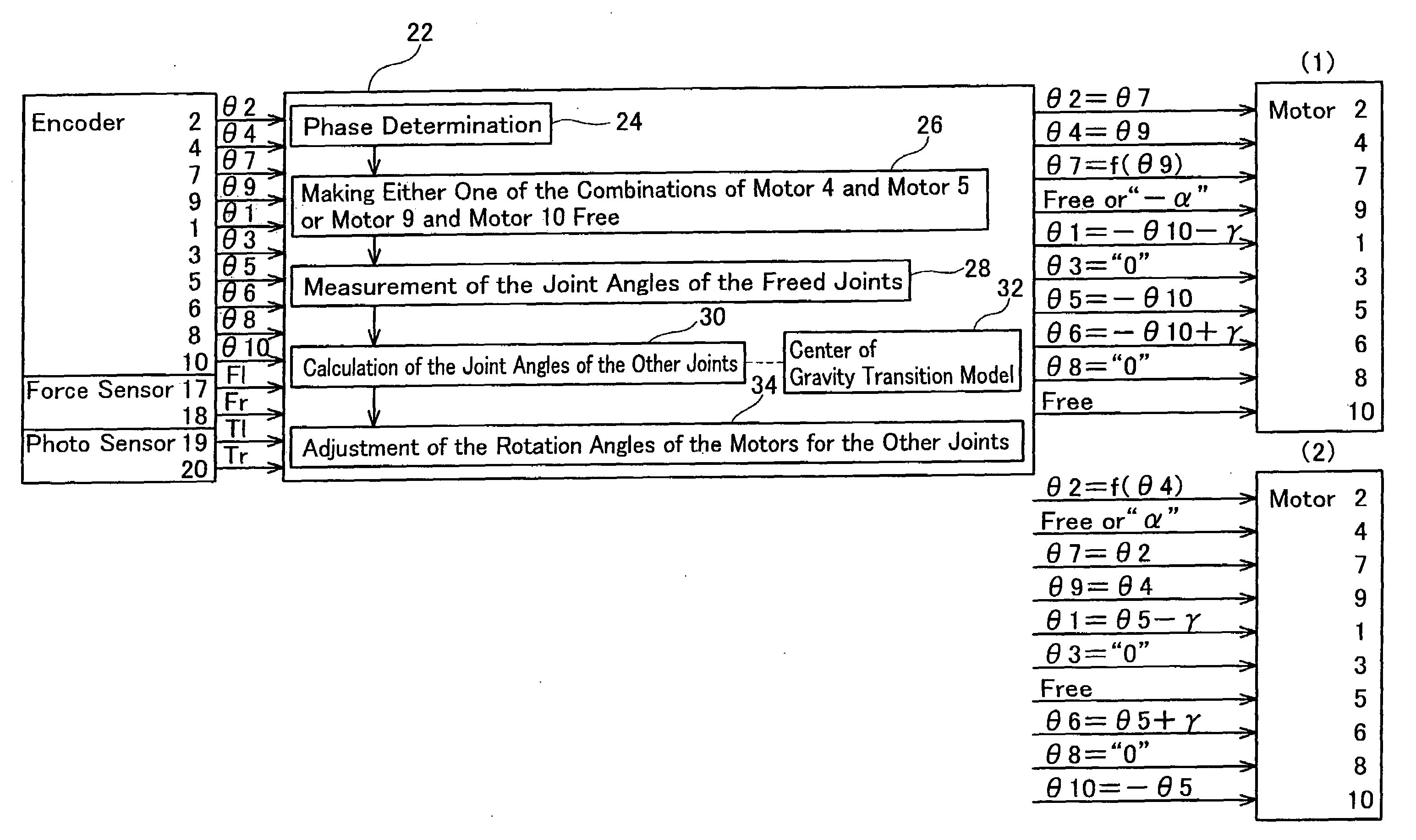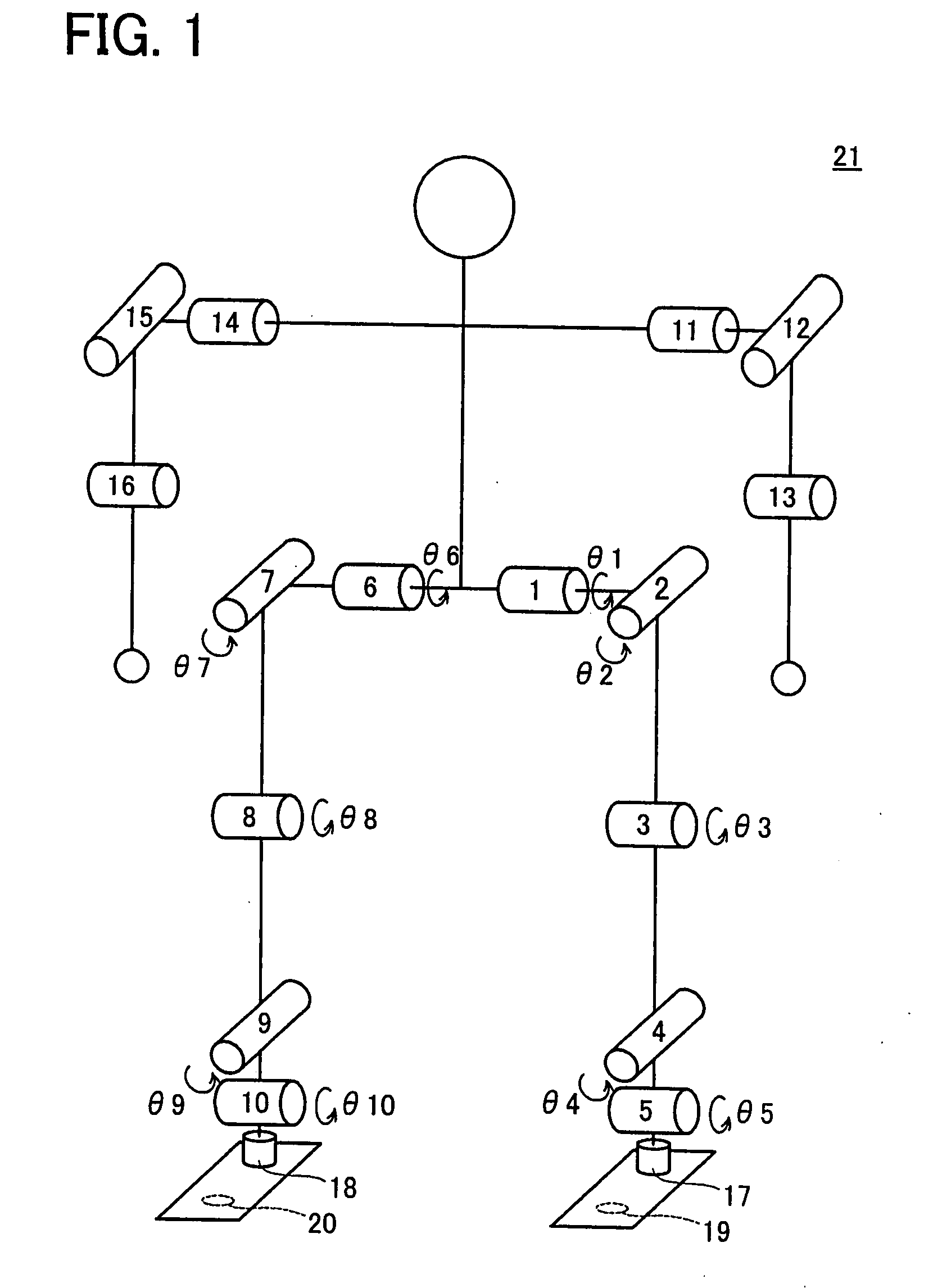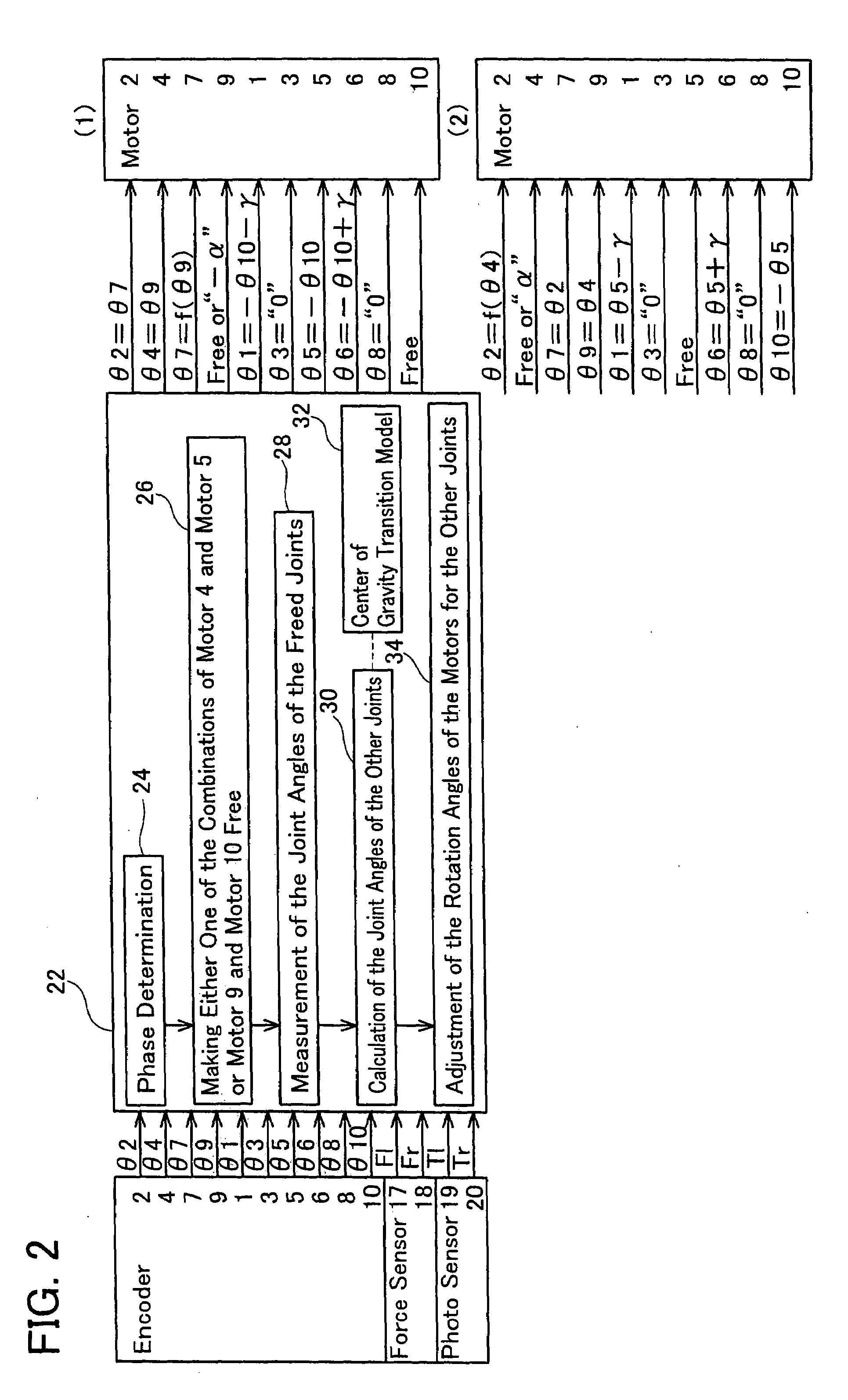Walking Robot by Using Passive Changes in Joint Angles and Control Method Thereof
a technology of joint angle and control method, applied in the field of robots, can solve the problems of difficulty in controlling walking, change in walking state, disturbance of stride, etc., and achieve the effect of natural walking movement, low energy consumption, and high degree of safety
- Summary
- Abstract
- Description
- Claims
- Application Information
AI Technical Summary
Benefits of technology
Problems solved by technology
Method used
Image
Examples
Embodiment Construction
[0038]Examples in which the present invention is embodied will be described below with reference to the drawings.
[0039]FIG. 1 shows a mechanical structure of robot 21. The robot 21 comprises a pair of hip joints with two rotation axes, a pair of knee joints with one rotation axis, a pair of ankle joints with two rotation axes, a pair of shoulder joints with two rotation axes, and a pair of elbow joints with one rotation axis. The robot 21 comprises motors having encoders on each rotational axis, and can adjust joint angles and measure joint angles. θ1 to θ10 indicate joint angles. Reference numerals 17, 18 indicate force sensors, and 19, 20 indicate photosensors. The photosensors 19, 20 detect whether the foot plane is grounded or lifted.
[0040]FIG. 2 shows the components of controller 22 for robot 21. The outputs of encoders 1 to 10, the outputs of force sensors 17, 18, and the output of photosensors 19, 20 are input into controller 22, which instructs rotation angles of motors 1 to...
PUM
 Login to View More
Login to View More Abstract
Description
Claims
Application Information
 Login to View More
Login to View More - R&D
- Intellectual Property
- Life Sciences
- Materials
- Tech Scout
- Unparalleled Data Quality
- Higher Quality Content
- 60% Fewer Hallucinations
Browse by: Latest US Patents, China's latest patents, Technical Efficacy Thesaurus, Application Domain, Technology Topic, Popular Technical Reports.
© 2025 PatSnap. All rights reserved.Legal|Privacy policy|Modern Slavery Act Transparency Statement|Sitemap|About US| Contact US: help@patsnap.com



